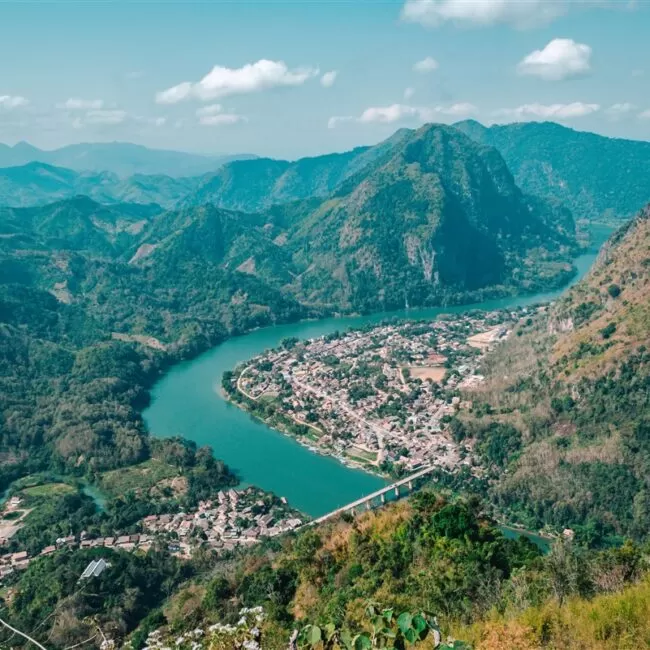

Are you looking for an amazing local experience in Bogota? Then you absolutely need to check out the Paloquemao Fruit Market. This indoor market is one of the largest ones in Bogota and is known for its great diversity of food ranging from fresh fruit and vegetables to flowers and plants. The market plays a significant role in the everyday lives of the local Bogotians and it’s the perfect place to visit if you like to immerse yourself in local Colombian culture!
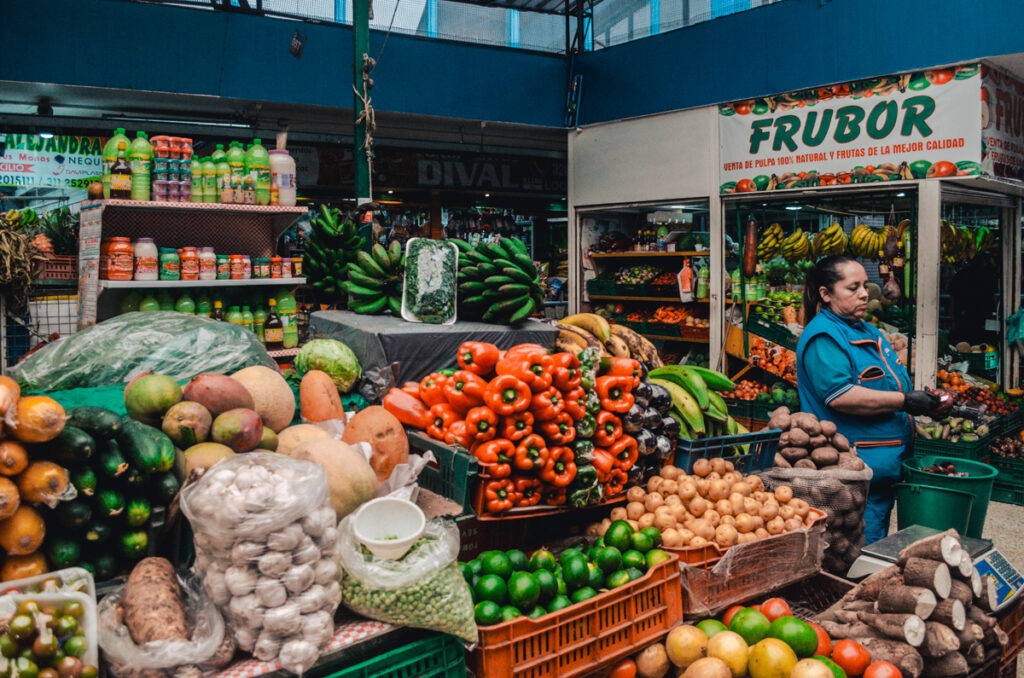
Vendor at Plaza Mercado Paloquemao maket
The Paloquemao Fruit Market is located only a few kilometers from La Candelaria, Bogota’s historic district. You can find its exact location here on Google Maps.
You can easily walk from La Candelaria to the Paloquemao Food Market in about half an hour but there are also plenty of other transport options to get there, like taking an Uber or the Transmilenio, which I’ll get into later in this post.
My trip to Paloquemao was one of the highlights of my visit to Bogota and Colombia in general. I was living with a local family in a homestay and Nicolas, my host at Casa Rojas, was eager to show me around this lovely local spot that is one of Bogota’s hidden treasures.
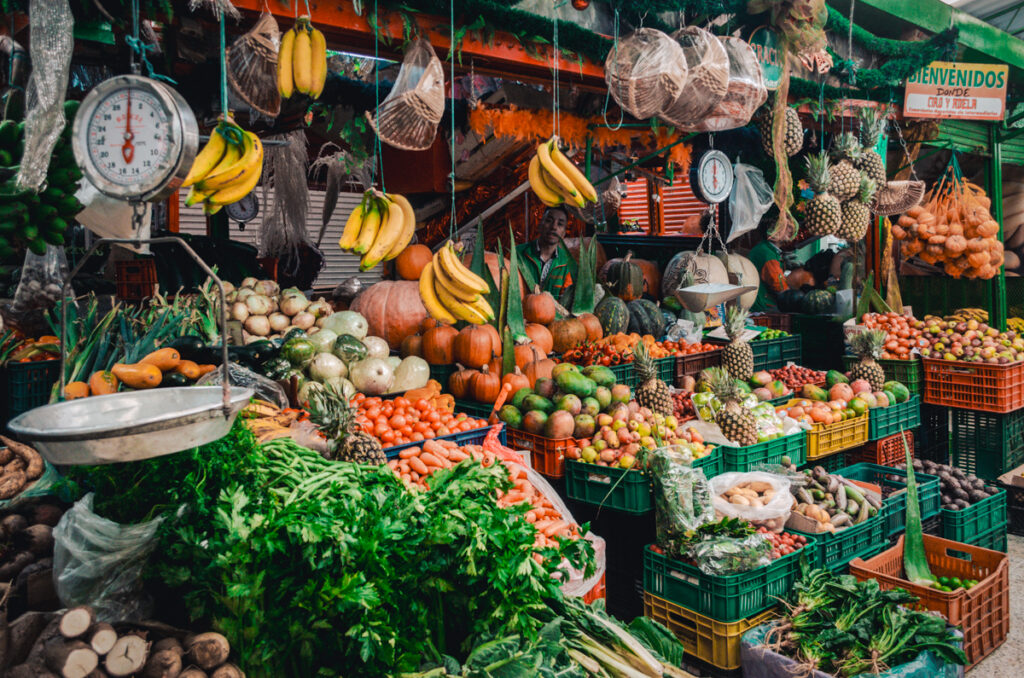
The main reason to visit Paloquemao Fruit Market is to buy fresh produce of course like the most delicious Colombian fruit, fresh veggies, or anything else you might need like fresh rice milk, beans, rice, medicinal herbs, or plants.
It’s a great place to stock up on food if you are staying in Bogota for a while and if you fancy cooking your own meals.
But, moreover, the authenticity of the market is what truly makes this a must-visit place in the city. Nicolas explained to my partner and me that the market is a cornerstone of everyday Colombian life, a place where people meet up, negotiate, and buy everything to sustain their households.
Visiting the Paloquemao Market is also a great way to invest in ethical and sustainable tourism. The stalls are managed solely by Colombians so your money funnels right back into the local communities.
Take a stroll through the market and afterwards, look for a busy food stall and order an arepa and tinto coffee. This is what travel is about!
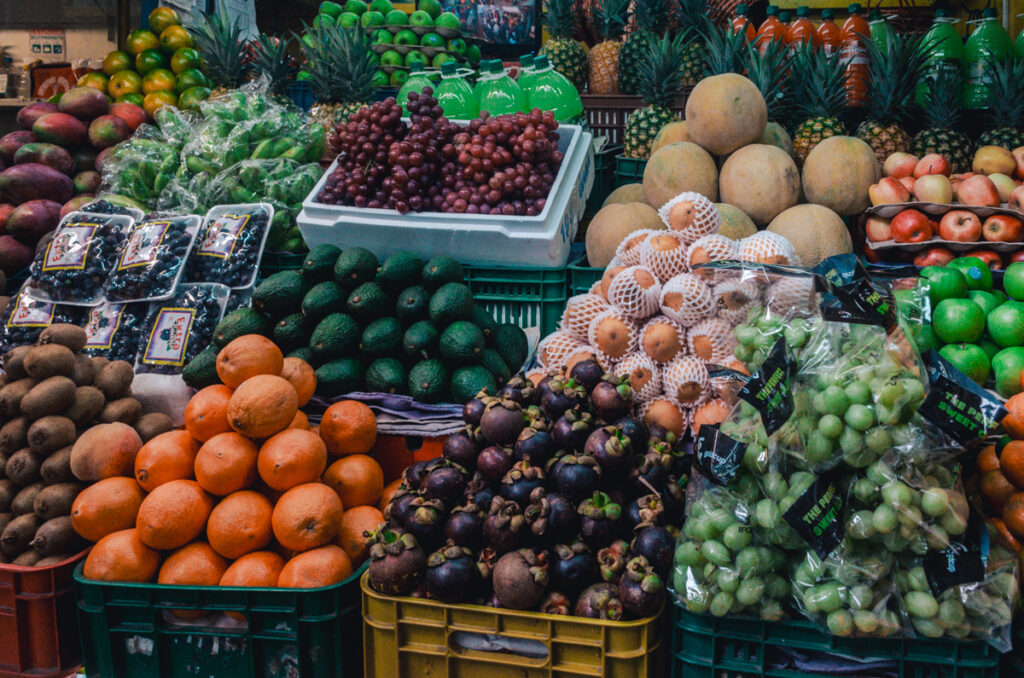
Fresh delicious fruit at Paloquemao Market
Contrary to what the name makes you believe, the Paloquemao Fruit Market isn’t solely about fruit. You can find everything you need here concerning fresh produce, whether it’s fruit, vegetables, rice, beans, and yes, also meat, fish and dairy.
Here are the main things you can find at the Paloquemao Fruit Market!
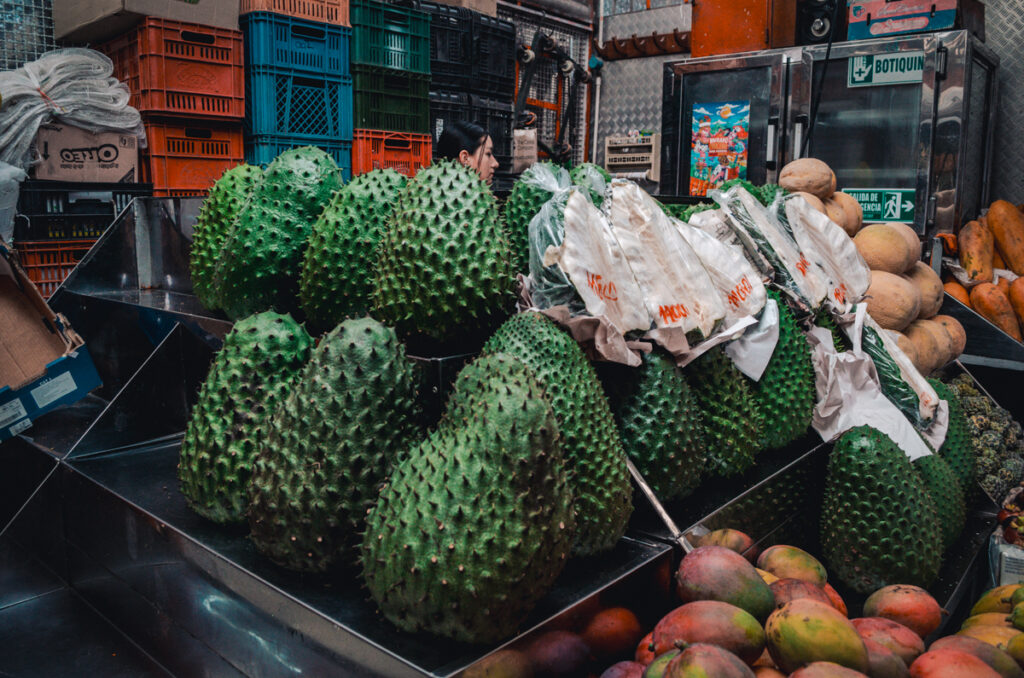
Soursop
Paloquemao is a paradise for fruit lovers. You can find an incredible array of fresh fruit here and the next fruit stall you’ll see will look even more impressive than all the ones you’ve just passed by.
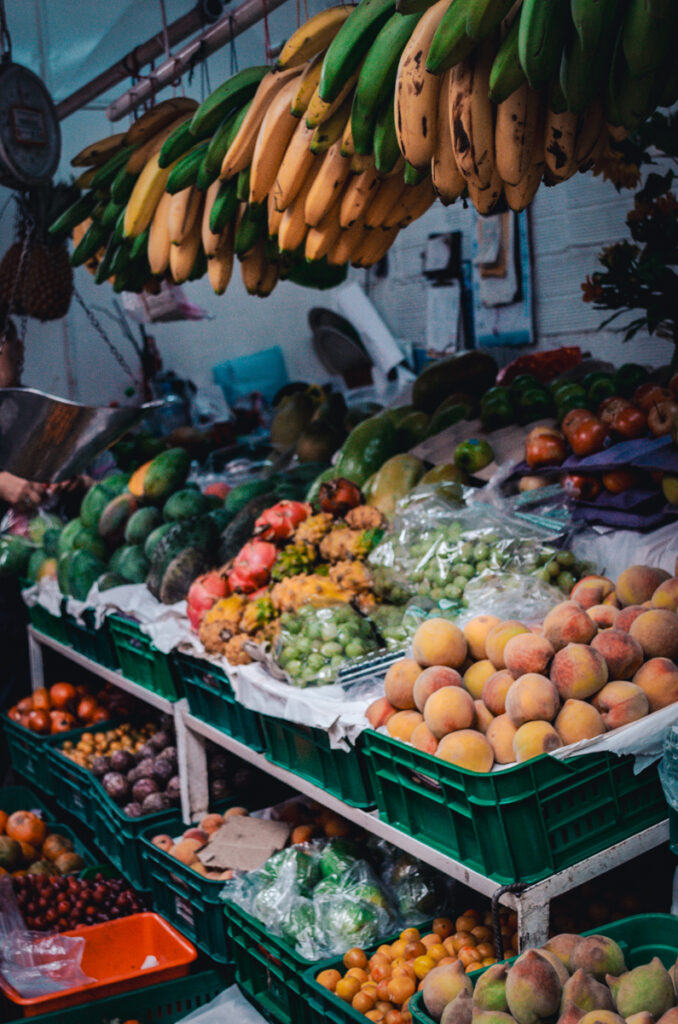
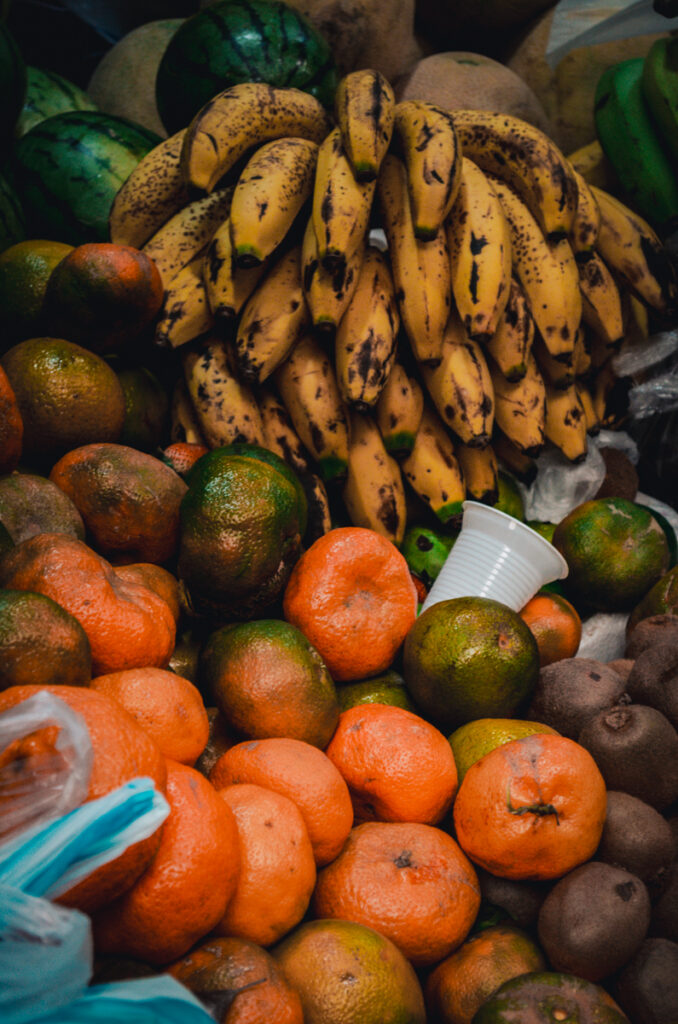
Fresh Colombian fruits at Paloquemao market
Some fruit stalls are dedicated and specialized in selling just one or two things (avocados!) while other stalls have a lot of variety in their exotic fruits, mostly of Colombian origin.
Many of the Colombian fruits you’ll see might be completely new to you and I can highly encourage you to try a lot of them!
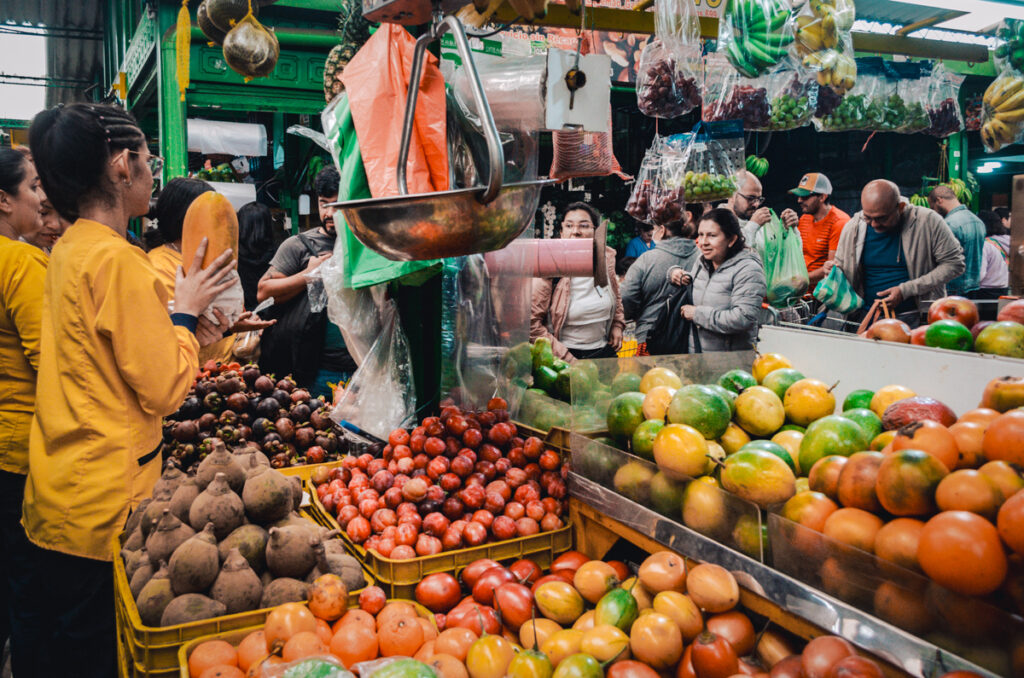
Vendors selling fruit at Paloquemao Market
Look out for the small but very flavorful pitayas (small dragon fruits), soursops, and mangostinos. Mangos and papayas can be bought here too and are a bit cheaper in general than the three other fruits I mentioned above.
Nicolas recommended asking the vendors for a taste before buying and they are usually more than happy to let you try their produce for free. This is especially interesting if the fruit is quite large, like a soursop, and you want to try it before buying it.
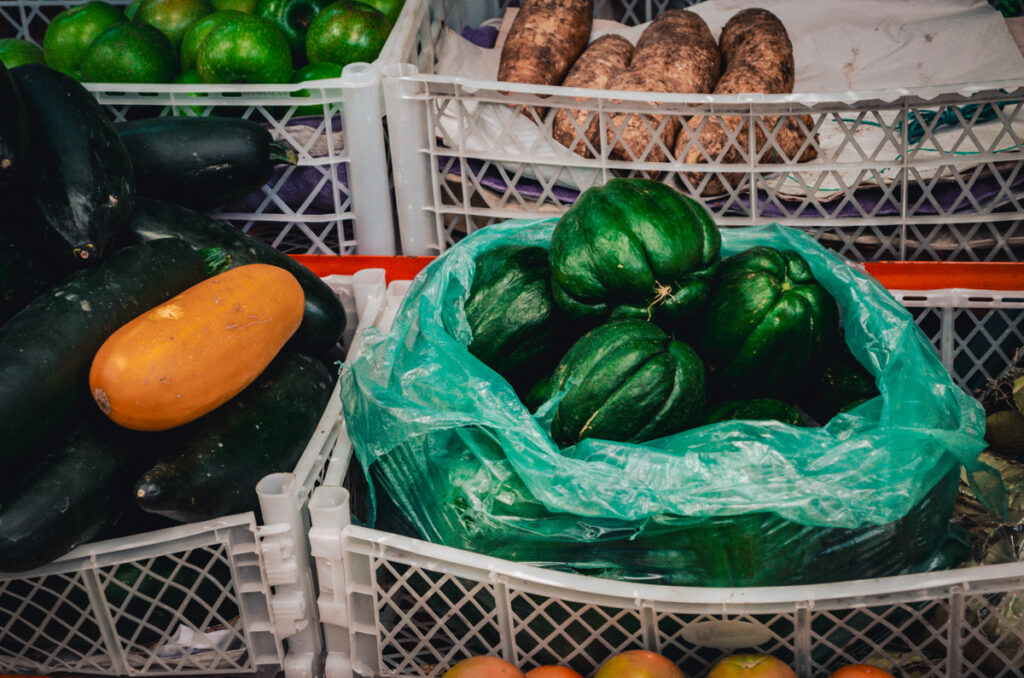
The vegetable section of the Paloquemao Market is as varied as the fruit section. You can find staple foods here like carrots and potatoes but also lesser-known vegetables like arracacha and chuguas.
The vegetables you find at the Paloquemao Market are often fresher and cheaper than what you’ll find at supermarkets.
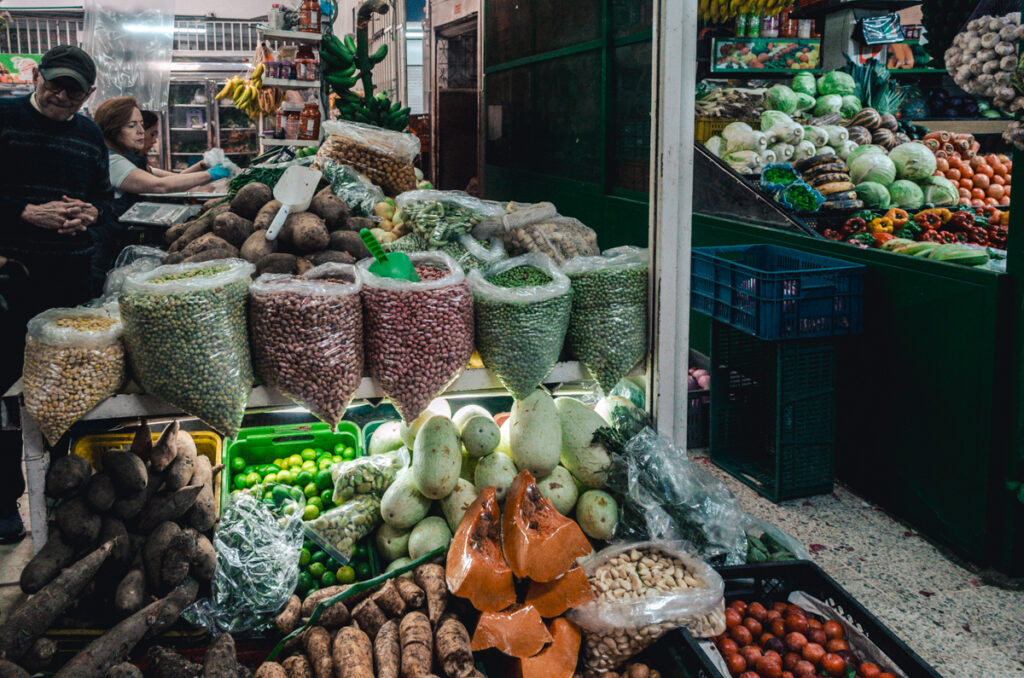
If want to explore some Colombian staples then look out for the variety of beans, rice, corn and flours that are for sale at the market.
Masarepa flour is the flour that is used to make arepas and you can also find mute on the market, a particular type of processed corn that is used in a variety of dishes but mainly in Colombian soups.
If you would consider staying at Nicolas’ place, Casa Rojas, then you can ask him to prepare a delicious vegan mute soup for breakfast for you with nut milk and cinnamon!
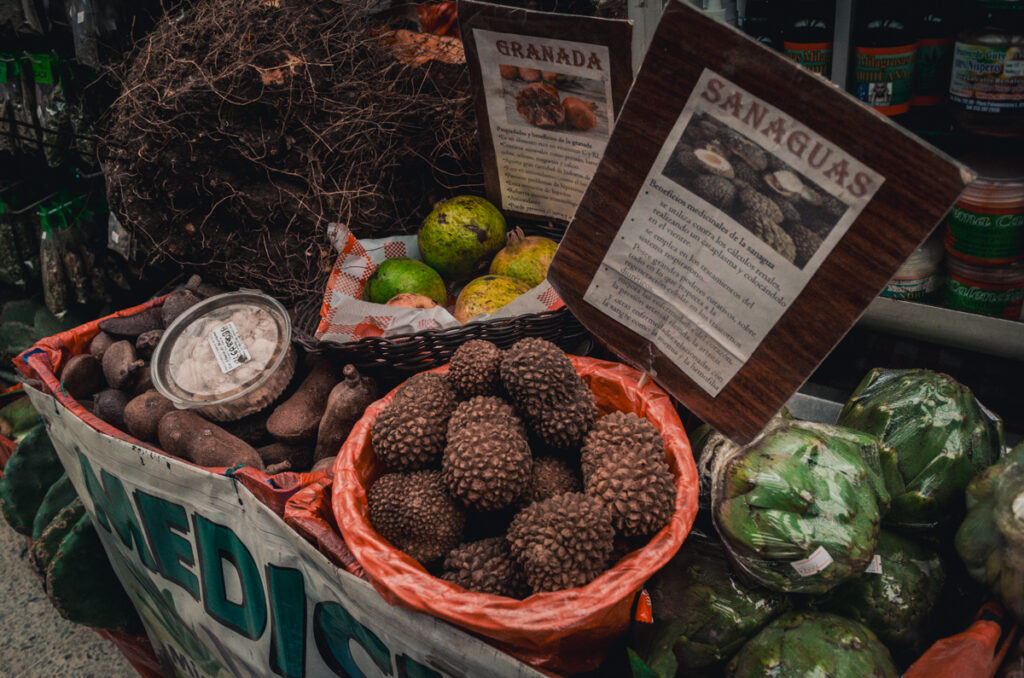
If you are a conscious traveler who is interested in natural health remedies, then you will love the food stalls with medicinal herbs and plants.
You can find a variety of herbs and plants here that are used in traditional Colombian medicine. Most of them are very common ones like Sabila (Aloe vera) but other ones are typically Colombian, like Sanaguas, a fruit that is used to cure all sorts of ailments from hypertension and diabetes to arthritis.
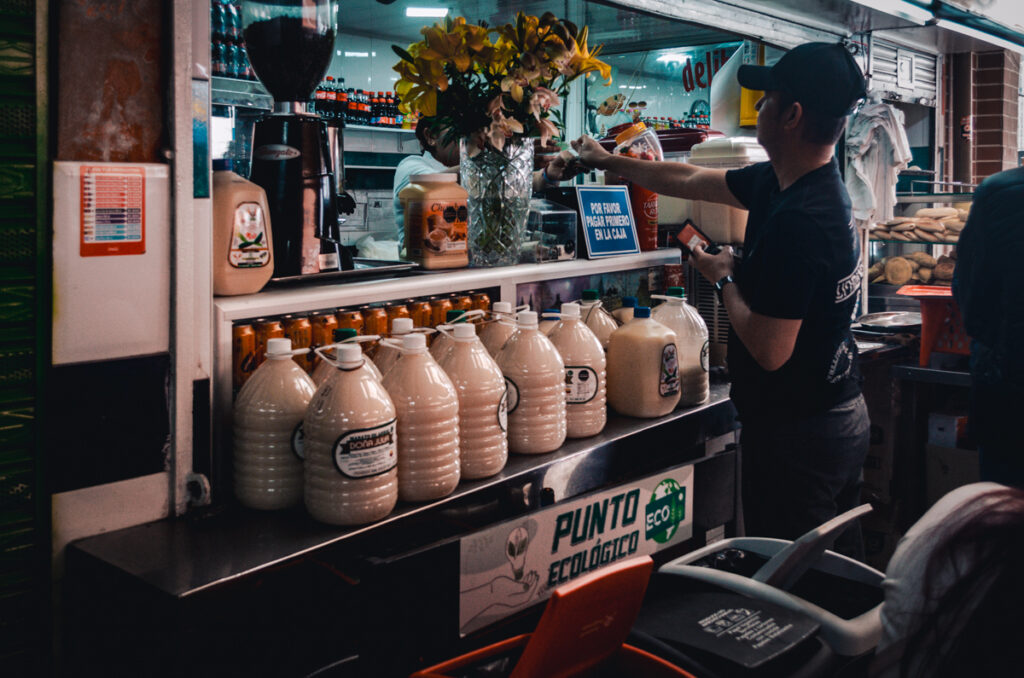
As a vegan in Colombia, you can find plant-based milk at every supermarket, even in smaller towns, but they are industrially produced and in general fairly expensive to Colombian Standards.
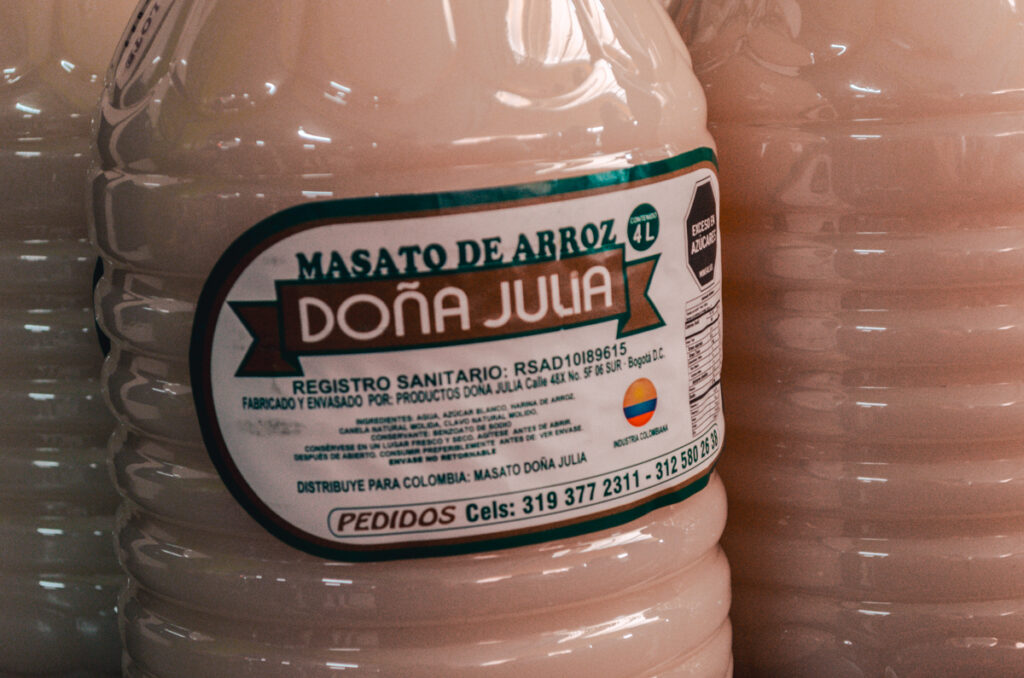
At the Paloquemao Fruit Market, look out for a stall that sells Masato de Arroz. Masato is a fermented indigenous drink that is widely consumed in Colombia and recipes have traditionally been passed on for generations.
It’s a great alternative to the nut- and rice milk you’ll find in the supermarkets and the taste is much better!
→ Also read: Is it Safe to Drink Tap Water in Bogota?
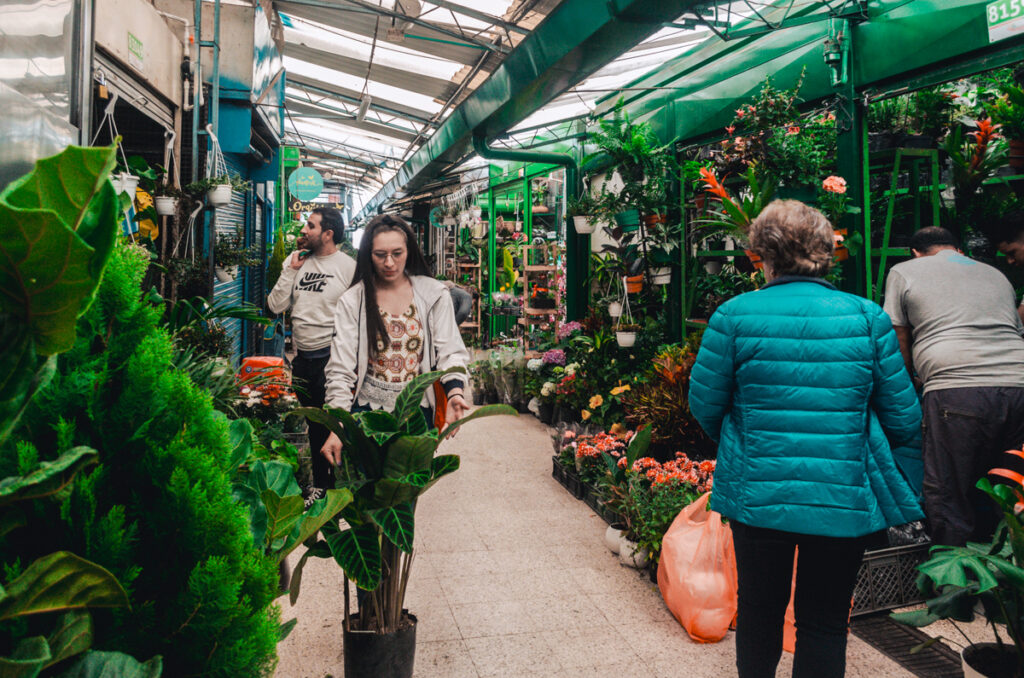
A plant is quite hard to take home as a souvenir but, nevertheless, it’s worth browsing through the flower market of Paloquemao as you may come across plants and flowers you have never seen before.
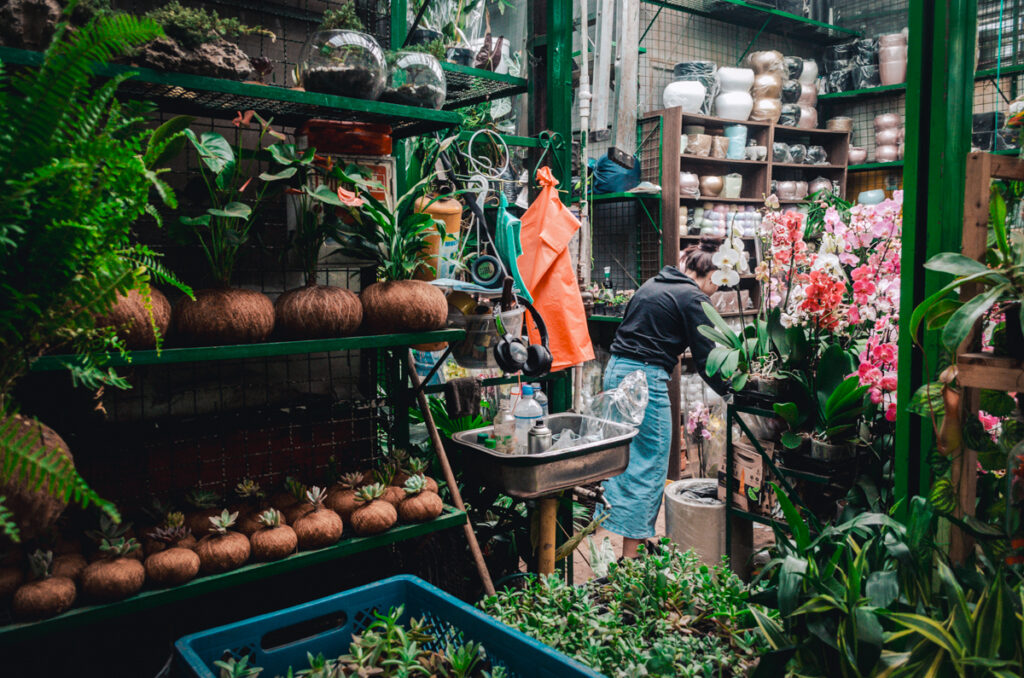
If you are staying at a lovely homestay and you want to give them a ‘thank you’ gift upon leaving, buying an orchid here is a great idea!
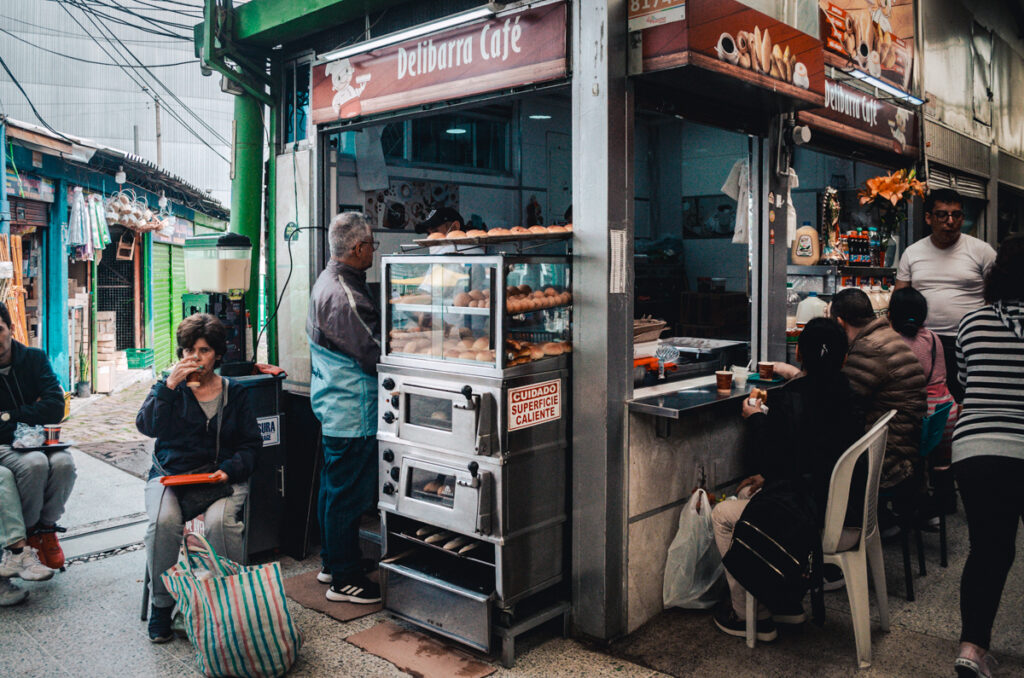
As you wander through the maze of little alleys of the market, you will notice a lot of cute food stalls and coffee stands at the market selling local food and drinks.
You can find the most popular Colombian snacks here like arepas, empanadas, and Bunuelos. None of these are vegan but if you are lucky, you might find a stall that sells patacones with hogao. Full meals like soup and rice dishes are also available.
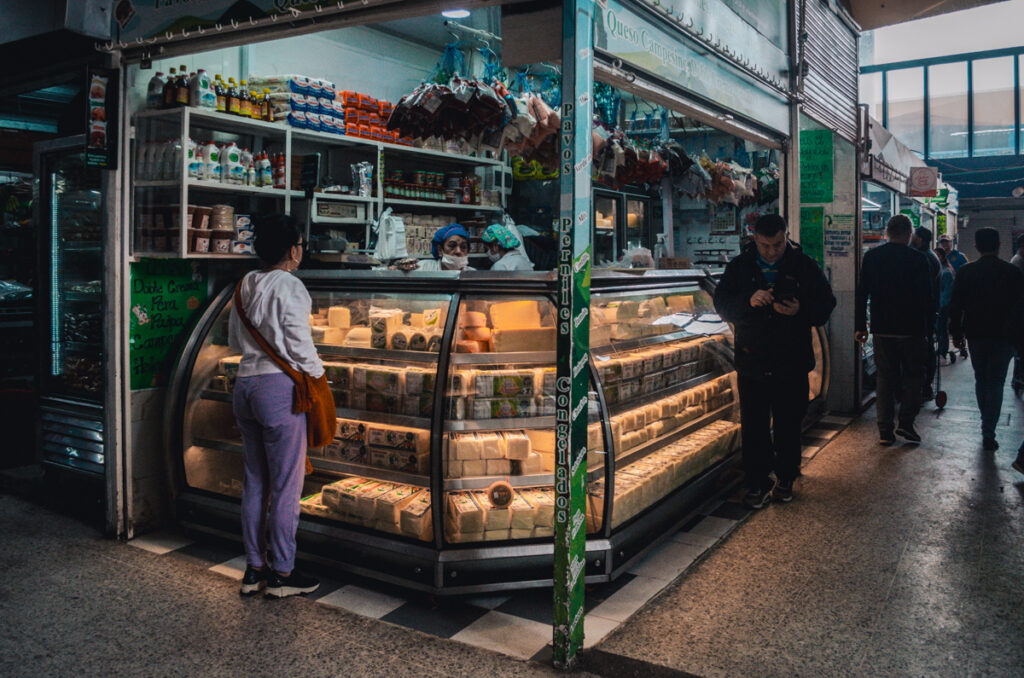
Food stall selling fresh cheese
Maybe not that fun to hear for vegan readers but the market also includes a section with fresh fish and meat. It is South America after all and, even though Colombia is very vegan-friendly, meat is a significant part of Colombian cuisine.
Cheese is also widely available at the market, especially the Colombian white cheese that comes with various names like quesito, campesino, or simply queso.
Here are the websites I use when I travel to Colombia:
Booking.com: For the best guesthouses, homestays, or small hotels
Hostelworld: To find the best hostels located in the cities
Homestay: For a unique immersive homestay experience in the big cities or the countryside
Busbud and Redbus: The best transport websites for long-distance buses in Colombia. Note that 12Go also works in Colombia but the tickets they will buy for you are open-seat tickets and don’t guarantee a seat on the bus you book online.
Uber: Uber is a convenient and cheap ride-hailing app that can be used in the bigger cities of Colombia. Other apps are Cabify or Didi.
Skyscanner: For affordable flights to Bogota and intercity flights in the country.
Viator and Get Your Guide: book all kinds of activities from the Ciudad Perdida trek to a guided private tour of Comuna 13 in Medellin.
Citizens of many countries, including the United States, Canada, the European Union, Australia, and New Zealand, do not require a visa for short tourist stays (typically up to 90 days). However, this can vary, so it’s always best to check iVisa for the specific requirements for your nationality.
If you’re looking for travel insurance, the one with the best benefits online is undoubtedly Heymondo! It’s very easy to ask for a quote on the website and, if you book with this link you’ll get 5% off!
Access mobile data immediately when entering the country with a Colombian E-sim or a Latamlink E-sim when traveling through multiple countries. If you are already in Colombia, the best local prepaid sim card is Claro.
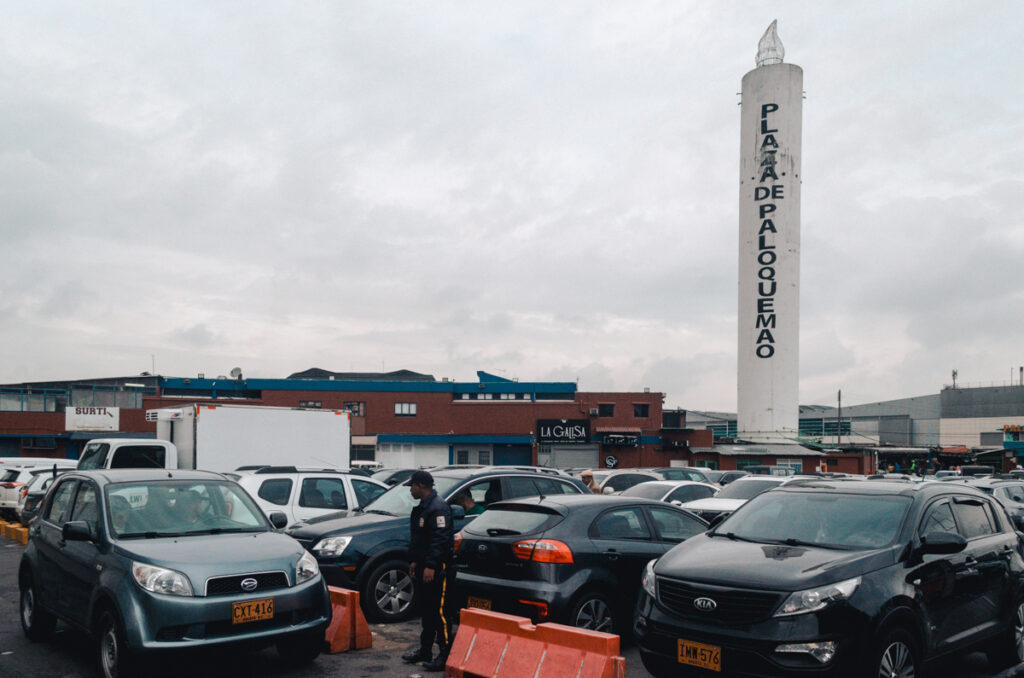
Getting to Paloquemao is very easy. If you are staying in the tourist-friendly areas of La Candelaria or Chaperino, taking a taxi or an Uber is the best option to reach the market.
If you are staying in La Candelaria, it’s also possible to walk to Paloquemao. It takes about half an hour to walk from the Gold Museum to Paloquemao Market.
Alternatively, taking the Transmilenio (local bus system) from La Candelaria is also a viable and cheap option. You will need to get off at the Paloquemao stop and from there, it’s only a short walk to the market.
The homestay I was staying in, Casa Rojas, was only a short 10-minute walk from the market and is the perfect place to stay in Bogota if you like a local family to accommodate you and show you around.
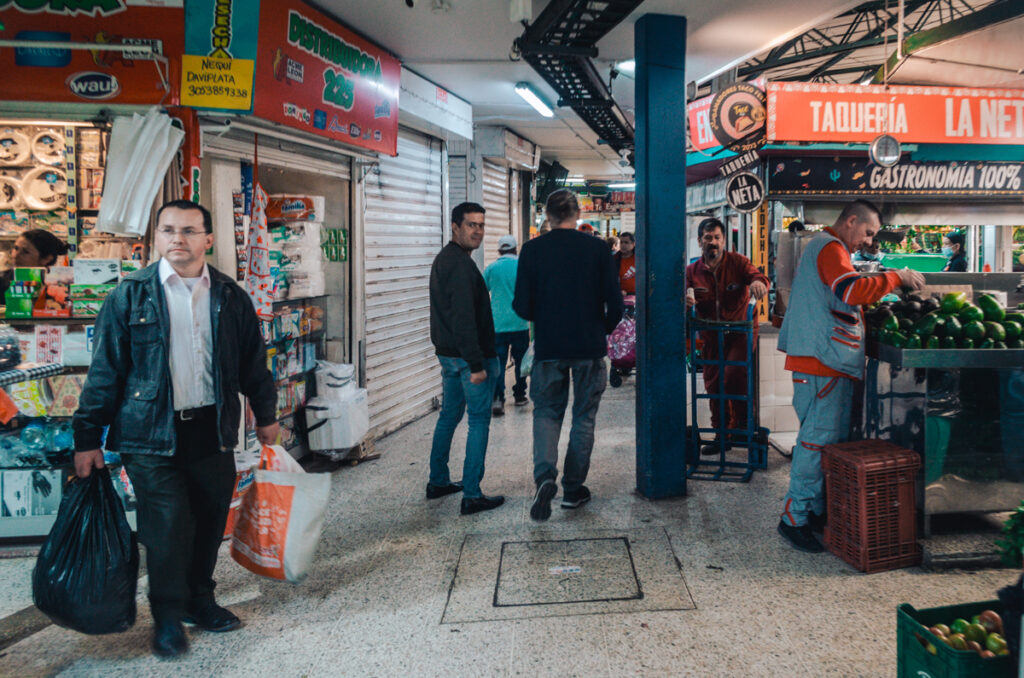
Nicolas and my partner exploring the market
Yes, you can go on a guided tour of the Paloquemao market if this is what you prefer. You can find various tours online that take you on a three-hour walk through the market.
This fruit tour of Paloquemao Market is a small group tour of a maximum of 10 persons that focuses specifically on learning about Colombian fruits. On the other hand, you can also find private tours of Paloquemao that don’t only focus on fruits but take you on a culinary trip throughout the market with various tasting options.
For an authentic experience with a local, I can highly recommend staying at Casa Rojas.
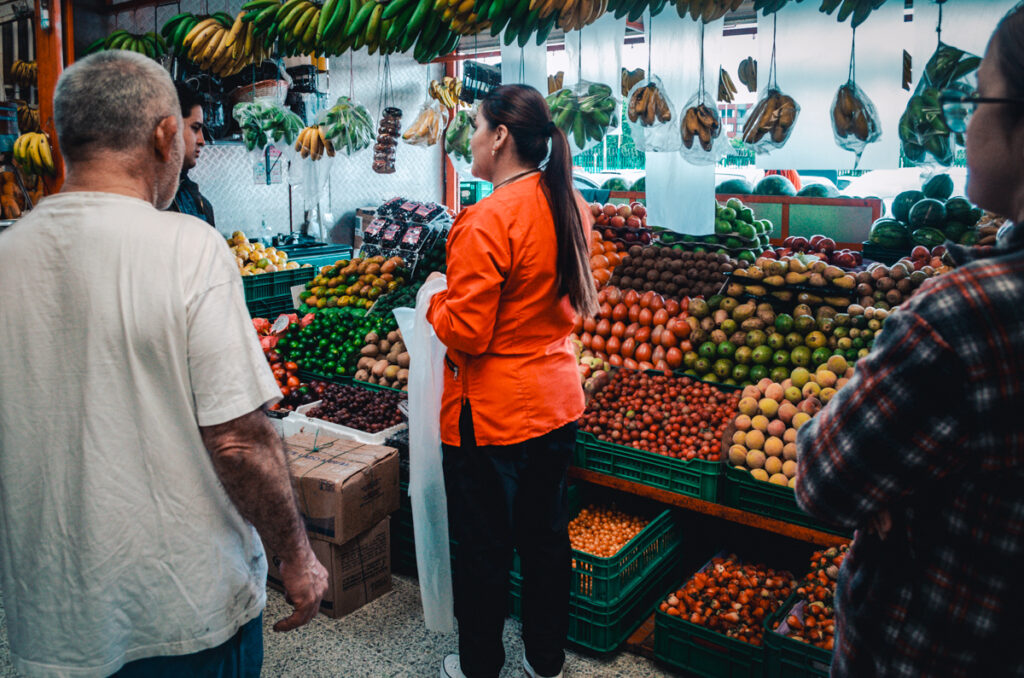
The Paloquemao market operates every day from around 4 to 5 A.M. to about 4 TO 5 P.M. Note that these hours can vary and some shops might close earlier or open later depending on the section you are visiting.
The best time to visit the Paloquemao Market is early in the morning. Many locals and restaurant holders visit during this time of the day to get the best picks of fresh produce and, as a result, the market is at its liveliest in the morning.
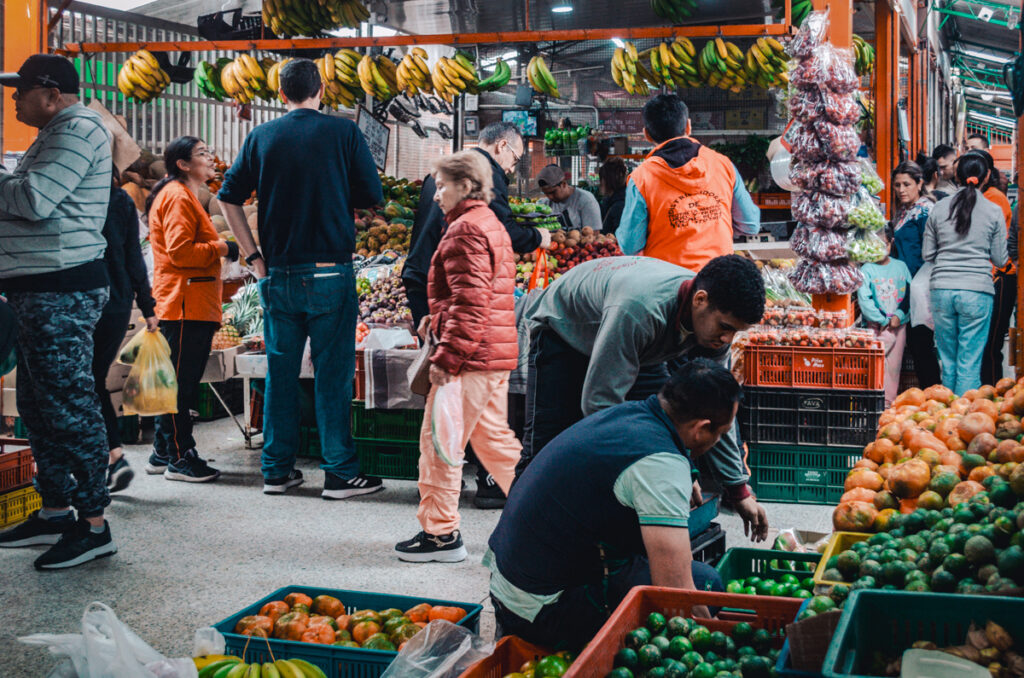
There you go! I hope you enjoyed this guide to the Paloquemao Market in Bogota. Let me know in the comments below if you have any questions or drop me a message through my contact page.
Also, don’t forget to check out my resources page with my favorite booking platforms and tips to start planning your trip. Additionally, have a look at my favorite travel gear if you want to pack more consciously!
ENJOY!
Disclaimer: This post may include affiliate links. If you click on them, I may receive a commission at no extra cost to you.
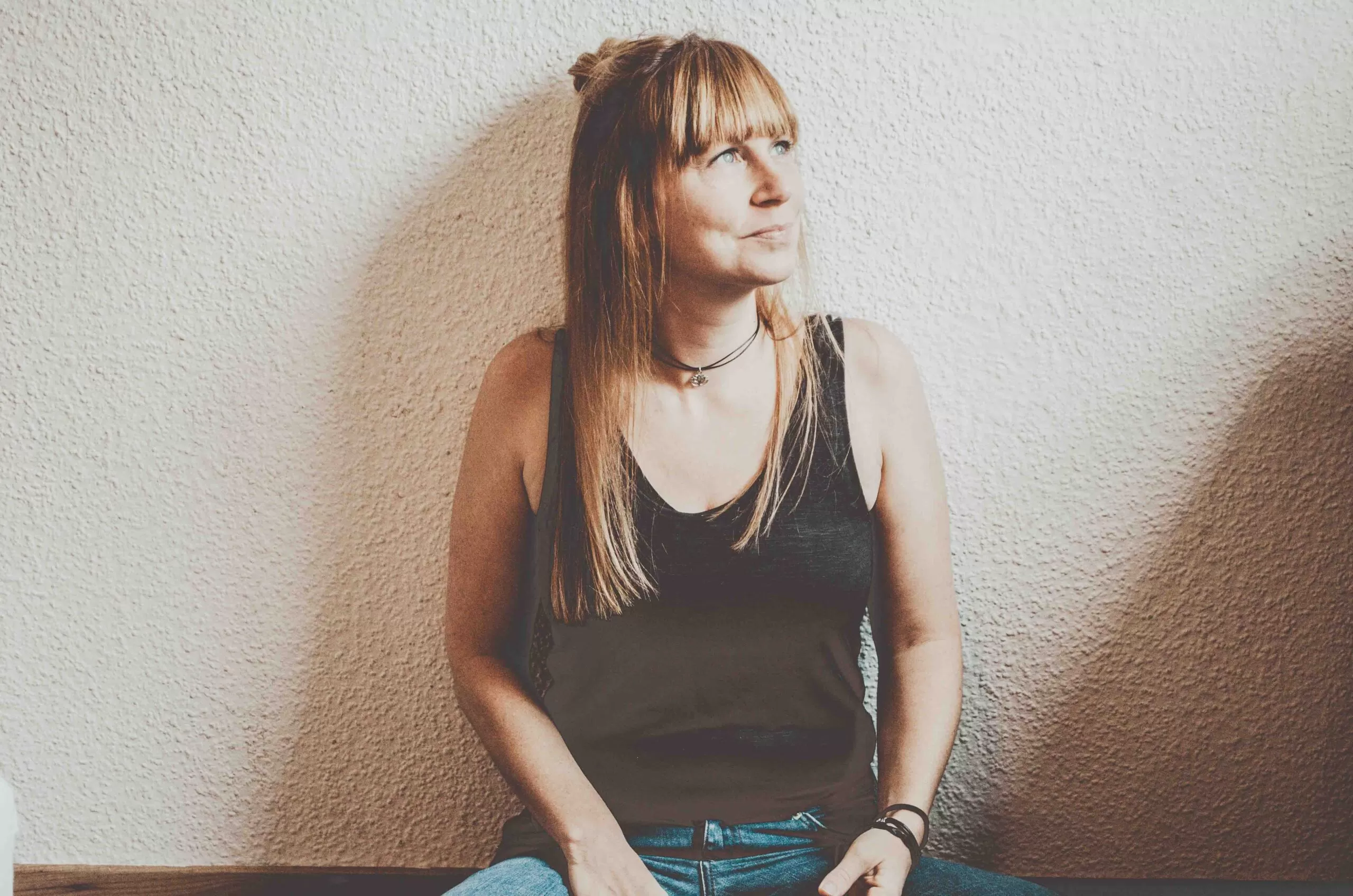
Hi! I am Annelies and this is Travelers & Dreamers, a blog about conscious travel which means traveling in a more mindful way, with a positive impact on the world and yourself!
On this website, I cover different topics like slow travel, plant-based food guides, responsible travel, sustainable packing, eco-travel, and more!
Latest Posts

15 Best Things to Do in Nong Khiaw, Laos (2024)

Santa Rita, Salento: All You Need to Know
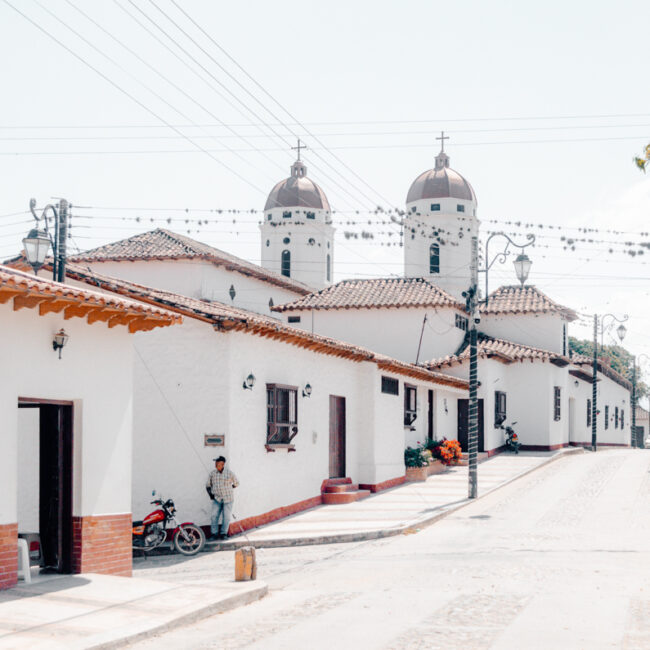
La Playa de Belen, Colombia: An Easy Travel guide!
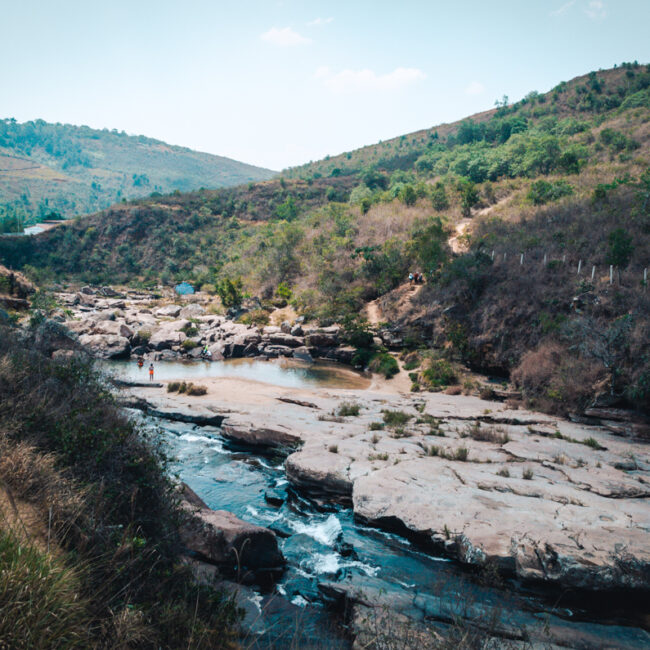
How to Visit the Pescaderito in Curiti (Near San Gil)
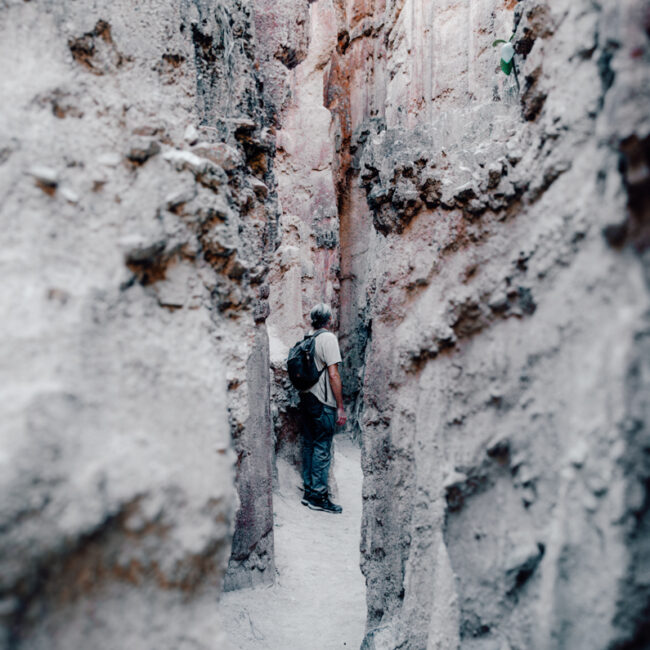
Los Estoraques Unique Natural Area: An Easy Travel Guide
Do you want to receive my latest finds on conscious and sustainable travel directly to your inbox? Subscribe here!
© COPYRIGHT TRAVELERS&DREAMERS, 2023.